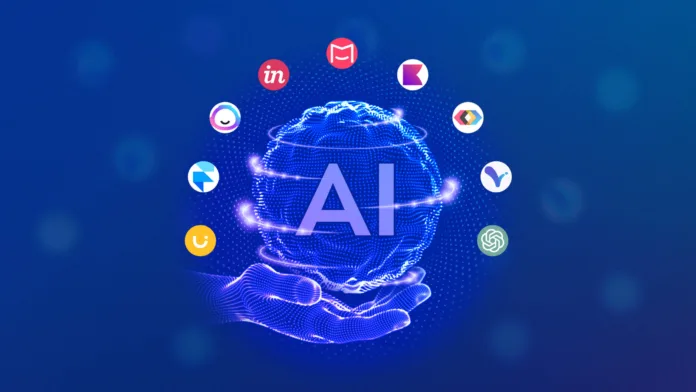
The year 2025 marks a pivotal moment in the AI-powered design revolution, where creativity is being transformed by the convergence of artificial intelligence and intuitive design platforms. From startups to enterprise teams, the design landscape is no longer the domain of specialists alone—thanks to tools like Canva, Adobe Firefly, and Figma AI, design has become accessible, intelligent, and faster than ever before.
This new wave of technology is democratising visual content creation, empowering users to design with minimal effort and maximum impact. But what exactly is driving this change, and how are these platforms leading the charge?
🎨 The Rise of AI in Design: A Creative Turning Point
Artificial intelligence has shifted from being a futuristic concept to a creative co-pilot. The AI-powered design revolution is characterised by features that automate, enhance, and simplify the design process:
Auto-layouts & Smart Templates
Image & Video Generation from Text Prompts
Real-time Collaboration with AI Suggestions
Voice and Gesture Design Inputs
Adaptive Brand Kits and Style Guides
Design is no longer just about aesthetics—it’s about intelligence. AI interprets user intent, suggests improvements, and even creates visual assets autonomously.
📌 Canva AI: From Drag-and-Drop to Smart Design
Canva’s transition from a user-friendly editor to a full-fledged AI-powered platform has redefined how non-designers approach content creation. With Magic Design, Text to Image, and AI-Powered Copywriting, Canva enables users to ideate and execute concepts in seconds.
In 2025, Canva has introduced real-time brand adaptation using AI. When users upload a logo or set brand colours, the AI automatically applies those styles to any template or layout—instantly producing a cohesive brand identity. This has transformed Canva into a marketing engine, not just a design tool.
🖼️ Adobe’s Creative Intelligence: The Firefly Effect
Adobe’s AI engine, Firefly, is pushing the boundaries of high-end design. It can now generate photorealistic images, apply style transfers, and suggest design enhancements—all from a simple prompt. Graphic designers, video editors, and illustrators are using Firefly not just to speed up workflows, but to unlock new levels of creativity.
In Adobe Illustrator and Photoshop, AI has matured into a feature called Contextual Creativity—where the software understands the design’s purpose and audience and makes intelligent suggestions accordingly.
Moreover, Adobe’s deep integration of AI into motion design and AR means that storytelling in 2025 is more immersive and automated than ever.
🧩 Figma AI: Smart Collaboration at Scale
Figma, traditionally celebrated for real-time collaboration, is now enhanced with AI design assistants that help teams generate wireframes, auto-complete UX flows, and review accessibility issues—all within seconds.
Figma’s AI engine also adapts to user behaviour over time, learning design preferences and frequently used components to optimise every session. The integration of AI into FigJam has made ideation smarter, providing dynamic suggestions during brainstorming sessions and enabling real-time prototyping from whiteboard sketches.
In large-scale product teams, this has been revolutionary—cutting down iteration cycles and making design systems truly intelligent.
🚀 Key Benefits of the AI-Powered Design Revolution
The value of AI in design goes beyond just speed or efficiency. Here’s how the AI-powered design revolution is changing the game:
✅ Inclusivity: Non-designers can produce quality visuals effortlessly.
✅ Productivity: Design teams spend less time on repetitive tasks and more on strategic thinking.
✅ Consistency: AI helps enforce brand guidelines and design standards.
✅ Scalability: Campaigns and assets can be adapted across languages, formats, and platforms instantly.
✅ Creativity Enhancement: AI acts as a creative partner, offering ideas users may not have considered.
📊 The Future of AI in Design: What to Expect Next
Looking forward, the AI-powered design revolution is expected to evolve into:
Emotionally intelligent design – where AI understands tone, sentiment, and user feedback.
Multi-modal input – allowing creation via speech, movement, or thought-based inputs.
Blockchain-protected originality – ensuring AI-generated work maintains authorship integrity.
Cross-tool intelligence – a unified creative ecosystem where AI tools sync across Canva, Adobe, Figma, and others.
We are on the brink of an era where creativity becomes limitless, not through replacement of human ingenuity, but through augmentation.
🧠 Challenges and Ethical Considerations
Despite the excitement, the rise of AI in design isn’t without its concerns:
Ownership & Authorship: Who owns an artwork made by AI?
Bias in Training Data: If AI is trained on biased data, it could perpetuate harmful stereotypes.
Job Displacement: Some worry AI will replace junior designers or reduce demand for manual creative work.
In 2025, responsible design practice includes transparency in AI usage and clear policies around attribution and ethics.
💡 Conclusion: The Creative Renaissance of 2025
The AI-powered design revolution is not just a trend—it’s a full-scale transformation of how we conceptualise and produce visual communication. With platforms like Canva, Adobe, and Figma embracing intelligent tools, design in 2025 is smarter, faster, more inclusive, and profoundly creative.
For designers, marketers, and creators, the future holds unlimited possibilities—powered not just by talent, but by intelligent technology that learns, adapts, and inspires.